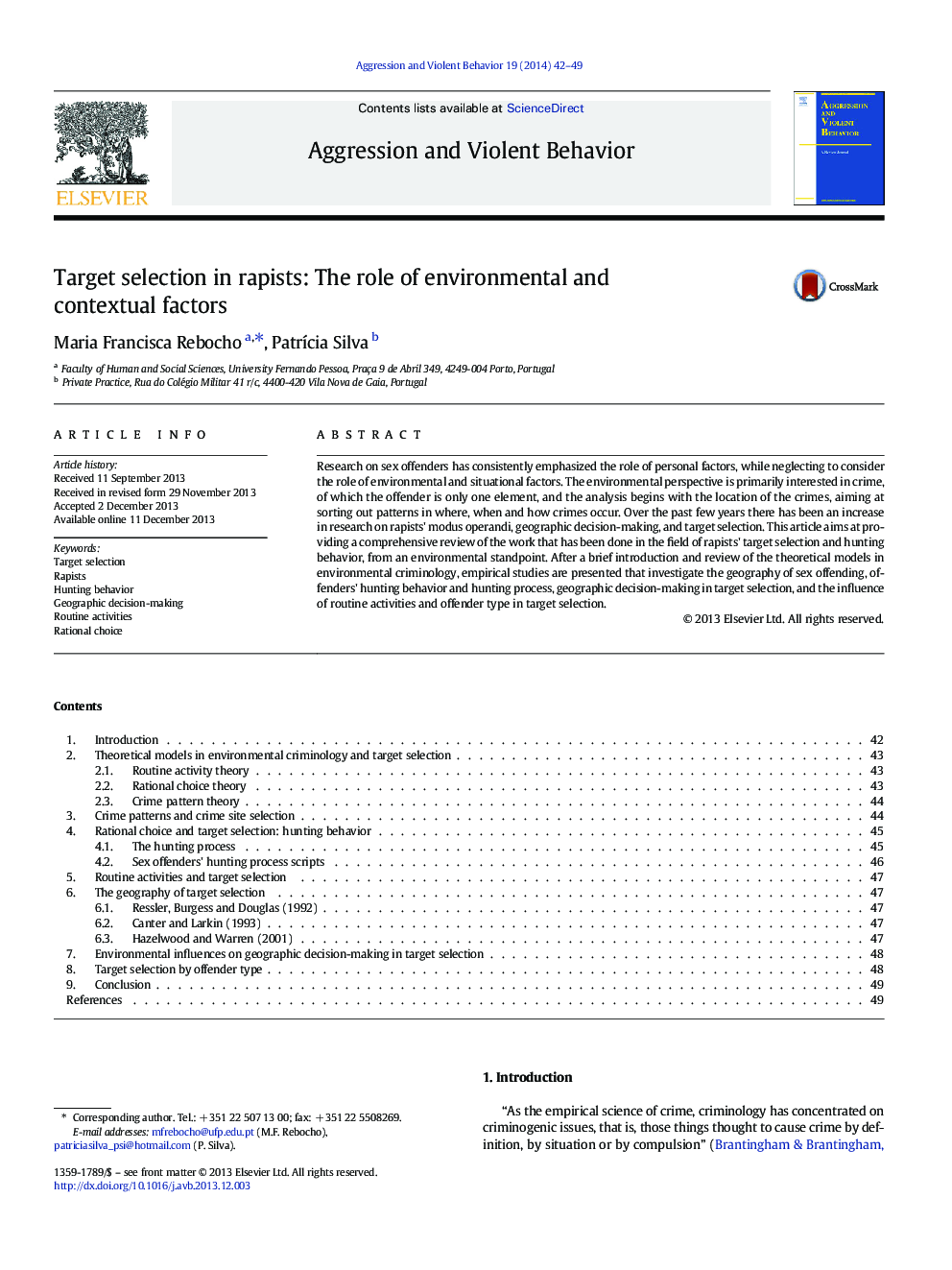| Article ID | Journal | Published Year | Pages | File Type |
|---|---|---|---|---|
| 94612 | Aggression and Violent Behavior | 2014 | 8 Pages |
•Rapists are decision-makers in their target selection process.•Environmental cues influence rapists' target selection process.•Rapists' hunting behavior incorporates both search and attack methods.•Routine activities influence rapists' target selection strategies.•Rapists and child molesters exhibit different target selection strategies.
Research on sex offenders has consistently emphasized the role of personal factors, while neglecting to consider the role of environmental and situational factors. The environmental perspective is primarily interested in crime, of which the offender is only one element, and the analysis begins with the location of the crimes, aiming at sorting out patterns in where, when and how crimes occur. Over the past few years there has been an increase in research on rapists' modus operandi, geographic decision-making, and target selection. This article aims at providing a comprehensive review of the work that has been done in the field of rapists' target selection and hunting behavior, from an environmental standpoint. After a brief introduction and review of the theoretical models in environmental criminology, empirical studies are presented that investigate the geography of sex offending, offenders' hunting behavior and hunting process, geographic decision-making in target selection, and the influence of routine activities and offender type in target selection.
